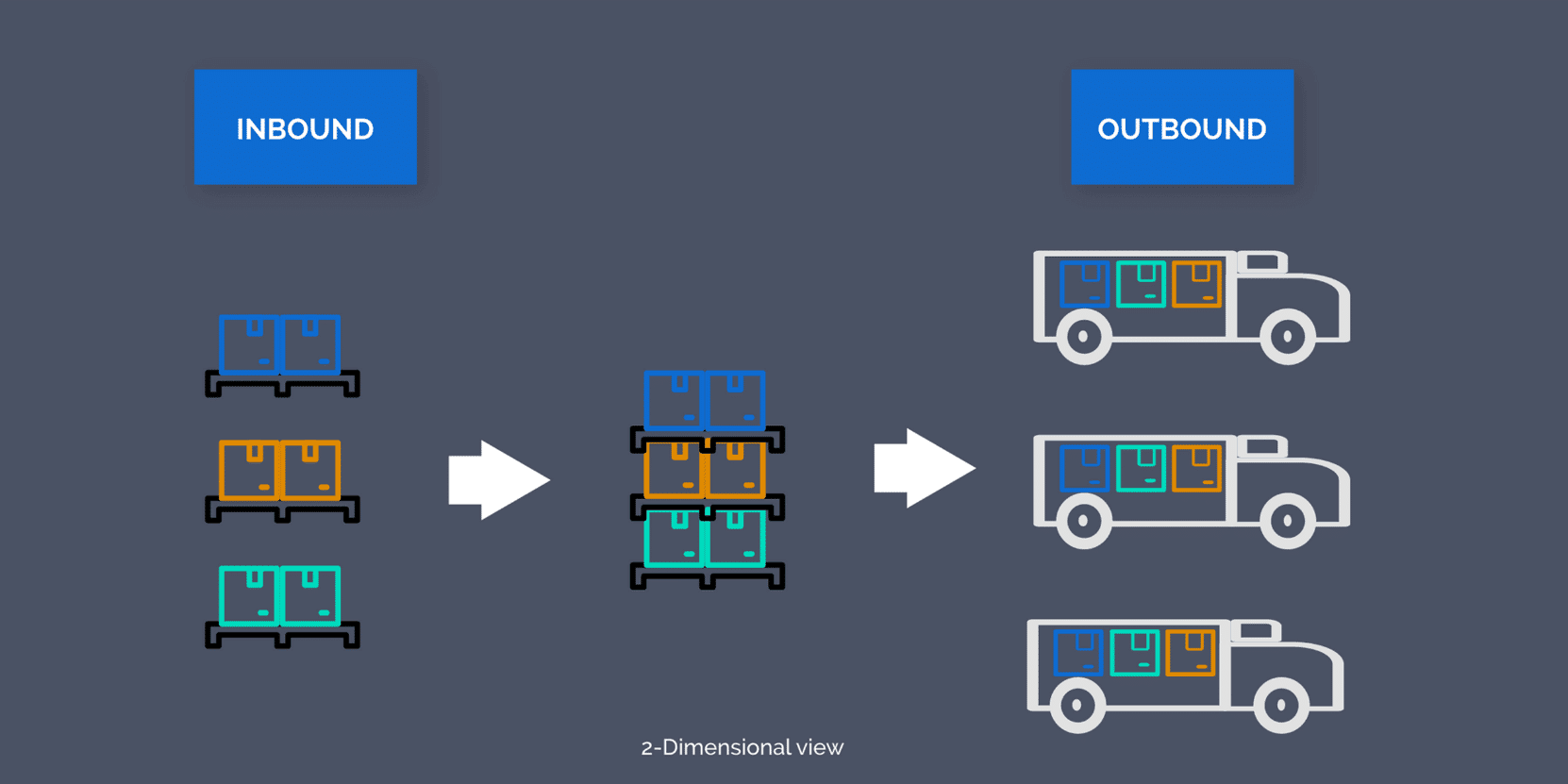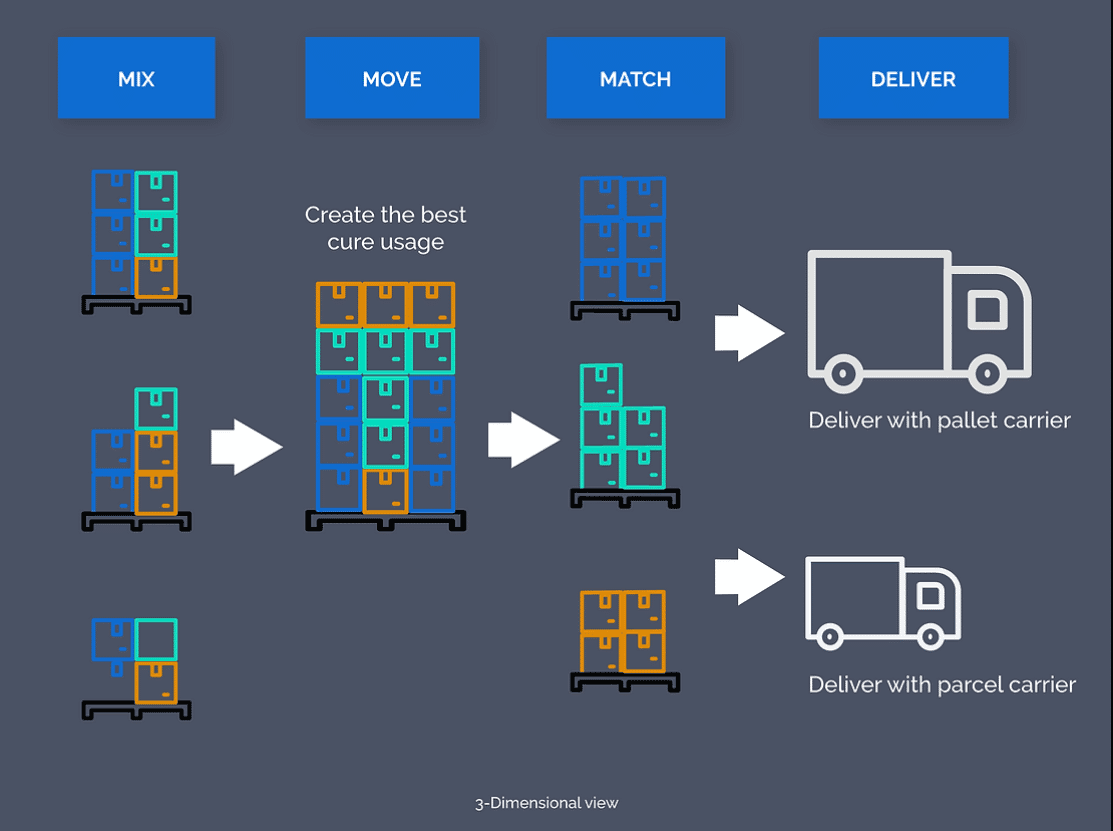

Level up your cross-docking process, to improve efficiency of your hub activities
Logistics operations are getting increasingly more tough and the challenges are piling up without a break. Over the last years, the growth in e-commerce, resulting in increased volumes, has caused capacity issues in current warehouse facilities. According to Forbes, e-commerce growth has created a seismic shift in the warehousing sector, forcing logistics professionals to act in order to survive.
Increase in e-commerce sales
A report conducted on the Global E-Commerce Outlook 2021 reveals several insightful statistics, stating that, over the next five years, e-commerce sales are expected to increase $1.5 trillion. Furthermore, the global e-commerce sales have increased 145% over the last five years.
In synergy with the boom in e-commerce, customer expectations are becoming increasingly more demanding which proves a challenge for planning processes. Customers expect to have their goods delivered within a short period of time and at a low cost. This generates implications for the warehouse operations. According to Eurostat, data shows that around 20% of freight trucks in Europe drive around empty, and the rest on average only half filled. This proves once again that there is room for better capacity utilization in logistics.
Lack of automated processes
Creating visibility and communication between the relevant stakeholders to achieve higher productivity levels is also a rising challenge, due to the traditional silo-based way of doing logistics. In addition, lack of automated processes lead to high operational inefficiency and low productivity i.e. directly affecting the bottom line.
Therefore, managing orders, coordinating multiple partners and handling the cross-docking are just some of the key aspects that impact the daily efficiency of a warehouse. Hence, optimizing your company’s cross-docking with a different approach can result in major benefits, both when it comes to efficiency and costs.
The standard cross-docking process: a 2-dimensional view
Cross-docking is a known process in logistics that involves unloading goods from inbound delivery vehicles and directly loading them onto outbound transportation modes, saving warehouse space as less storage space is required. Warehouses rely on several applications to help them manage the warehouse workflow processes.
A traditional 2-dimensional cross-docking application deals with the width and length of loading units. This creates a lot of unused space from top to bottom, whether in the shipping container or within the transport means.
The different solutions used in warehouses today (such as WMS and TMS) plan the full shipment in advance and deal with all the exceptions as they come up, promoting the logistics plan as a whole, even with multiple legs or transport modes involved. These plans rely on inflexible point-to-point partner integrations and require setup effort for each new relationship. Hence, If something unexpected comes up affecting the planned shipment, it is often difficult to find a solution dynamically adjusting the plan, without it impacting the customer.
A warehouse usually deals with multiple processes and systems across suppliers, which on the surface seems to provide flexibility. It however instead opens a door to mistakes and inefficiencies. This is often overlooked due to relying on the operator’s knowledge of each customer thus placing the knowledge and decision responsibility on a human to correct and fine tune the solution plans in a dynamically changing environment.
Based on this, a traditional 2-dimensional cross-docking application leads to non-optimized capacity utilization, with low efficiency and high CO2 emissions, which is far from the desired outcome.


Amplify your order management with 3-dimensional cross-docking
MIXMOVE has developed a solution for cross docking that gives you the unique capability to plan and execute your logistics operations all the way down to item level. We amplify your existing systems through simple integrations via API or EDI to our platform, with minimal interference to your existing IT systems.
The platform provides you with a consolidated view of all orders expected to move through your warehouse. With this visibility, the solution enables you to mix consignments in order to create volume optimized loading units and combine orders in the most efficient way. The solution enables you to dynamically plan your outbound shipments by reacting to changes in orders in real-time.
The MIXMOVE cross docking solution is capable of adding height as dimension in managing the process, reconstructing pallets based on item attributes. This has led up to a 70-90% improvement in transport mode fill rates for our customers.
Accelerate of material flow and reduce the need for space
With our solution, the reconstructing of customer shipments can also be moved from the Distribution Center to the Carrier Hubs. The goal is to accelerate the material flow and reduce the need for space in the Distribution Center, solving the capacity issue. This allows you to take advantage of warehouse automation with conveyors, which our solution integrates to whilst it also allows you to pick the same product for several customers. This is done in the Distribution Center and has it sorted accordingly to different shipments closer to the customer. Planning is done at item level instead of shipment level, which gives your company more detailed information about each shipment.
By planning and executing all the way down to item level, you are able to track and execute transport instructions in a dynamic way, incorporating customer order updates while performing the reconstruction work, even having the possibility to take stock in transit into account.
“Using the MIXMOVE cross-docking solution has made a big impact on our customers’ logistics operations, enabling reductions of up to 35% to their logistics costs, reducing warehouse space requirements by up to 50% and reducing their emission impact on the environment by up to 50%.” – Patrick Van De Vyver, former Head of EMEA’s logistics operations, 3M
Improve your efficiency and customer satisfaction
We give you the possibility to share valuable information in real-time with your partners, which will improve your efficiency and customer satisfaction. The management system of the cross-docking terminals requires information about the incoming cargo prior to the actual arrival of the cargo. Moreover, the outgoing trucks require information about the units being loaded to the truck and their destination as well as end-users require updated information, concerning the whereabouts of the product they acquired.
The MIXMOVE platform enables you to seamlessly manage these processes and provide the necessary visibility.